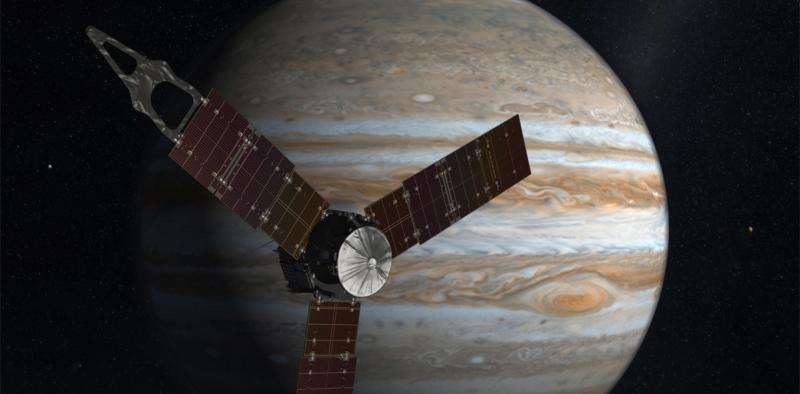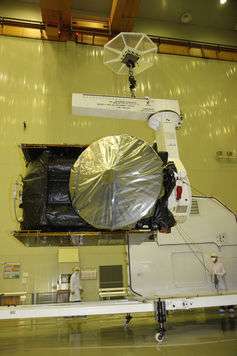Exciting missions that could unlock secrets of the solar system in 2016

From the mystery of methane on Mars to how Jupiter formed and whether there is microbial life on Saturn's moon Enceladus, there are many questions about our solar system waiting to be answered this year.
For planetary scientists, 2016 is a year of grand finales, anniversaries and planning major new missions. Let's take a look at some of the most exciting possibilities.
Mars
In July 1976, NASA's Viking Landers were the first probes to successfully reach the Martian surface. An immensely successful series of Mars landers followed.
NASA's Curiosity Rover is the latest. In 2016, Curiosity will pick its way through its current position in the Bagnold dunes – a band along the north-western flank of a 5.5km high mountain inside Gale Crater called Mount Sharp – and continue its drive up the mountain to reach iron-oxide layers (rust is a kind of iron oxide) and a clay-rich horizon – both believed to have formed from the reaction between water and Mars' crust. We know that lakes filled the Gale Crater around 3.8 billion years ago. Curiosity will photograph, drill and analyse to find out more about Mars' past warm and wet environment.
Europe is also aiming for Mars. ESA's ExoMars Trace Gas Orbiter will launch on a Russian rocket in March and get there in October. It will follow up Curiosity's discovery of traces of methane in Mars' atmosphere, which could be a result of cosmic dust, geological processes or even past microbial life. ExoMars will test for current geological processes that might be releasing the methane.

It will also drop a simple, small lander to the surface. If it performs as planned then it is likely that a more ambitious ExoMars Rover – a two-metre drill on wheels with science instrumentation designed to test for traces of ancient life – will launch between 2018 and 2020. If ExoMars goes ahead as planned then the €150m or so needed to complete it could lead to postponements of other possible projects such as a mission to return material from Mars' moon Phobos.
Moon
The moon also has a landmark anniversary: it is 50 years since the first successful robotic landing on its surface by the Soviet Union's Luna 9. The Russians have always maintained a keen interest in the moon. Meanwhile, ESA has offered European countries a plan to collaborate with RosCosmos, the Russian Space Agency, to start a new lunar exploration programme – with an initial focus on sampling the previously unstudied South Pole Aitken region. But budgets are limited. A decision at the European Council of Ministers in November about space priorities will be difficult, with projects targeting the moon, Mars' moon Phobos and Mars all competing for funds.
Meanwhile, US company Astrobotic Technology hopes to be the first private lunar lander and rover mission in 2016.
Outer solar system
The Juno NASA spacecraft will reach Jupiter in July. Juno will orbit Jupiter 32 times for a year helping us to answer questions about how the planet formed, how much water exists inside its atmosphere and how its mighty magnetosphere works.
Meanwhile, the Cassini mission will begin a gradual grand finale in September, orbiting between Saturn and its outermost ring while flying past the moons Titan and Enceladus before crashing into Saturn in 2017. This will provide a last opportunity to analyse the water-rich geysers on Enceladus. In 2015, researchers even suggested that certain chemical reactions inside its internal ocean may provide enough energy to feed microbial life. The study predicted that these would create molecular hydrogen that should be detectable in the plumes.
An even more exciting candidate for life in our solar system is Jupiter's moon Europa, which has a fractured crust of ice thought to overly an ocean which might harbour life. It would be nice if Europe got involved in exploring this, perhaps by contributing a "penetrator", a light probe designed to bury itself on a body's surface, to a planned NASA fly by mission.
A tiny member of the outer solar system is comet 67p/Churyumov-Gerasimenko. In 2015, the Rosetta mission achieved a remarkable feat by landing on the 4km-wide cometary nucleus. Rosetta will be crashed into the comet in September – look out for some spectacular close-up images.
A NASA mission called Osiris Rex to sample a carbonaceous asteroid called Bennu will be launched in September on a seven-year round trip. The mission could help us better understand the materials that make up our planets. Fittingly it comes on the tenth anniversary of the Stardust mission which returned samples from Jupiter Family Comet 81P/Wild2 and changed our view of what comets are made of.
So there's a lot to look forward to. But aside from European, Russian and US missions, let's not forget that China will steadily continue to build a space station and plans to go on to Mars and the far side of the Moon. India hopes to launch its first astronauts into orbit, and the Japanese Hayabusa2 mission will continue its journey to return samples from an asteroid.
It is impossible to determine what the greatest highlight of space science will be in 2016. But it might not even come from the glamour of space missions. Each year, 50,000 tonnes of cosmic dust and material from bodies in the solar system comes to planet Earth – and that can lead to unexpectedly great discoveries.
Source: The Conversation
This article was originally published on The Conversation. Read the original article.
![]()




















